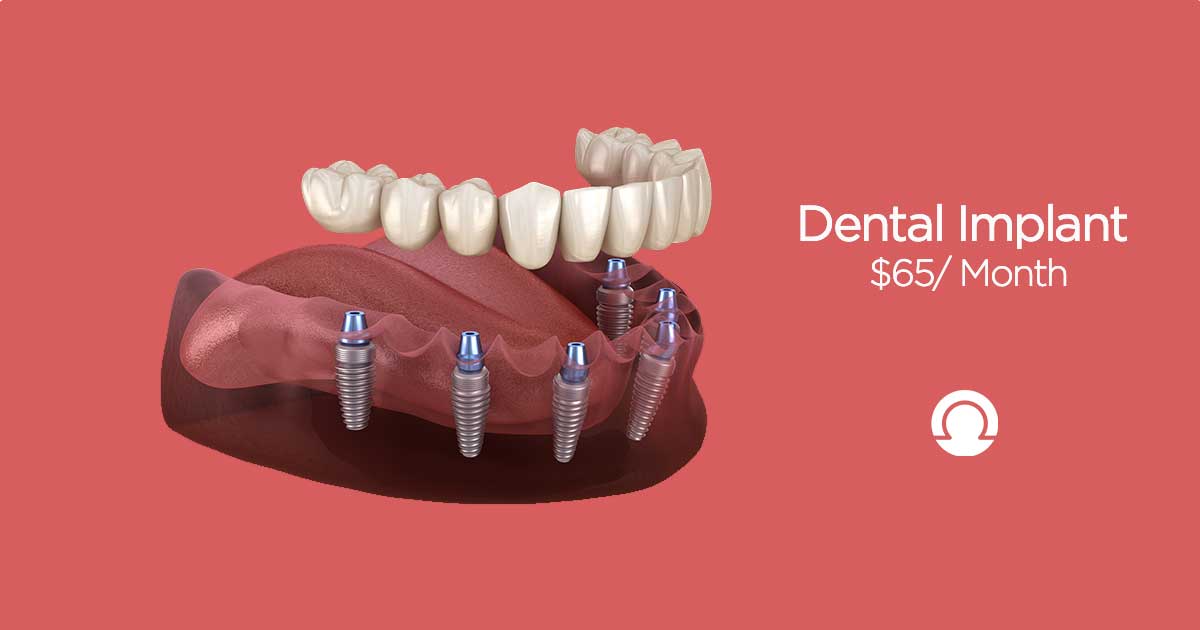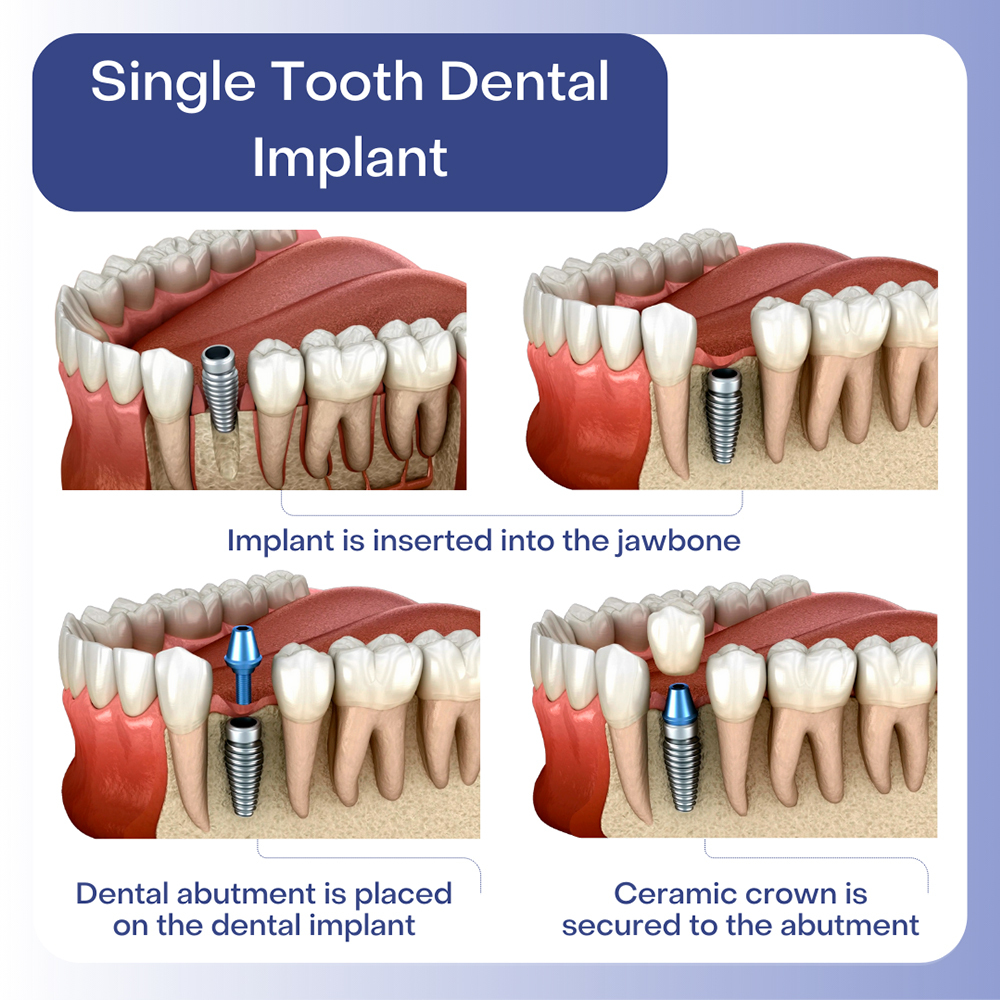Unknown Facts About Dental Sense
Unknown Facts About Dental Sense
Blog Article
The 2-Minute Rule for Dental Sense
Table of ContentsMore About Dental SenseThe smart Trick of Dental Sense That Nobody is DiscussingThe 7-Second Trick For Dental SenseThe Best Guide To Dental Sense
are clinical tools operatively dental implanted into the jaw to restore a person's capacity to chew or their look. They provide assistance for man-made (phony) teeth, such as crowns, bridges, or dentures. When a tooth is shed due to injury or disease, an individual can experience difficulties such as fast bone loss, faulty speech, or modifications to chewing patterns that cause discomfort.Dental implant systems include an oral implant body and dental implant joint and may also consist of a joint fixation screw. Wisdom tooth cavity. The dental implant body is surgically inserted in the jawbone in place of the tooth's origin. The oral implant abutment is generally connected to the implant body by the joint addiction screw and prolongs through gum tissues right into the mouth to sustain the attached fabricated teeth
(https://www.callupcontact.com/b/businessprofile/Dental_Sense/9469240)Framework of The Dental Implant System selecting dental implants, speak with your dental company regarding the prospective benefits and risks, and whether you are a prospect for the treatment. Things to think about: Your overall health is an important consider determining whether you are an excellent prospect for dental implants, the length of time it will certainly require to recover, and how long the dental implant may remain in area.
Smoking cigarettes may influence the recovery process and lower the lasting success of the dental implant. The healing procedure for the implant body may take numerous months or longer, throughout which time you commonly have a short-lived abutment in place of the tooth. the oral implant procedure: Carefully adhere to the dental hygiene guidelines provided to you by your dental company.
The Single Strategy To Use For Dental Sense
Implant failure can lead to the demand for one more medical procedure to deal with or replace the implant system. Brings back the capacity to chew Brings back aesthetic appearance Assists maintain the jawbone from shrinking because of bone loss Maintains the health and wellness of the surrounding bone and gum tissues Helps keep adjacent (close-by) teeth steady Boosts lifestyle Damages to surrounding all-natural teeth throughout implant placement Injury to the surrounding tissues during surgical procedure, such as sinus opening Injury during surgical treatment (as an example, crack of surrounding jawbone) Insufficient feature, such as seeming like the teeth do not bite with each other normally A feeling that the tooth is loosened or twisting in area resulting from an abutment screw loosening Implant body failure (looseness of the implant body) because of systemic infection, which might be most likely in patients with unchecked diabetes because of regional infection in bone and gum tissues supporting the dental implant body as a result of postponed healing, which might be more probable in people that smoke Problem cleaning up the gums around the implant, causing poor oral health Without treatment periodontal disease Post-surgical pins and needles due to nerve impingement or damage Always inform healthcare suppliers and imaging specialists that you have oral implants before any magnetic resonance imaging (MRI) or x-ray procedures.
FDA is not mindful of any kind of adverse events reported for MRI or x-ray procedures with dental implants. Oral implants systems are commonly constructed from materials that adhere to global consensus criteria of the International Company for Standardization (ISO) or ASTM International. These criteria have information of what makes a secure product.

A dental implant is a framework that replaces a missing tooth. With screw-like gadgets, the surgeon inserts a dental implant right into the jawbone, and it serves as a support for a fabricated tooth, called a crown. A gadget called an abutment links the artificial tooth to the dental implant. The crown is tailor-made to fit the person's mouth and match the color of their teeth.
The Ultimate Guide To Dental Sense
Some individuals are not eligible for oral implant surgical procedure. It is for oral specialists to run on individuals with: intense illnessuncontrollable metabolic diseasebone or soft tissue disease or infectionIf these concerns are solved, a person can have the surgical procedure. In, dental specialists avoid running on individuals with: If people with any one of the above go through oral implant surgical procedure, there is a higher risk of the dental implant failing.

Oral implant surgical procedure is an individualized procedure. It's not the exact same for every person. The adhering to gives a general overview of what you can anticipate your dental practitioner, dental doctor, periodontist or prosthodontist to do: Place the dental implant operatively. Give you time to heal. Connect the message and final crown, bridge or denture.
Next, your specialist will very carefully put the dental implant right into your jaw. If your implant is near the front of your mouth, your dental professional will make a short-lived tooth for you to put on till you heal.
The 8-Second Trick For Dental Sense
Your copyright can tell you what to anticipate in your scenario. During the recovery stage, your jawbone should fuse to the oral implant. This procedure, called osseointegration, is essential for stability and long-term success. This procedure can take anywhere from three to 9 months. In many cases, it may take much longer.
When your implant heals, your dental expert can affix the joint (tiny connector blog post) and your final reconstruction (crown, bridge or denture). This usually takes regarding one hour to complete and may require a 2nd small surgical procedure. You should not feel any kind of pain during your dental implant treatment because your supplier will make use of medicine to numb your gum tissues.
Report this page